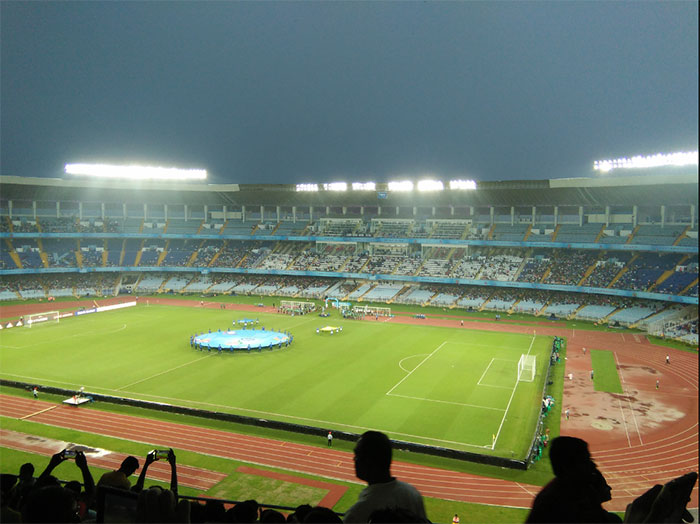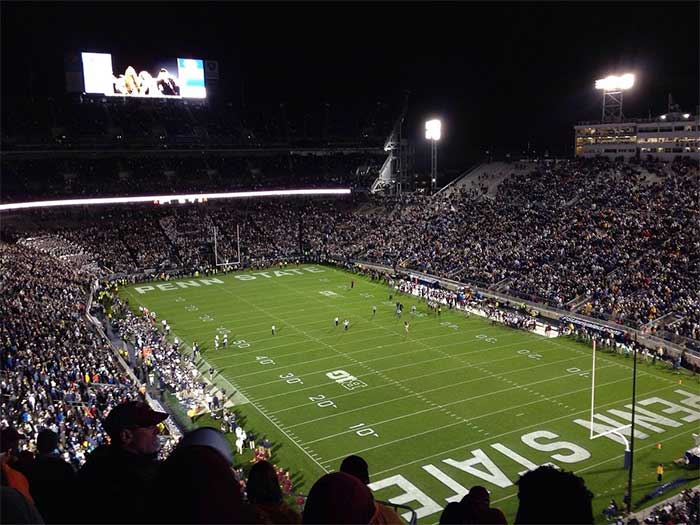The numbers talk about the 5 stadiums with the largest capacity in the world
When we talk about the world's largest stadium, we are talking about buildings that are impressive not only in scale but also in design and purpose. This is not only a place to organize sporting events, but also a place for cultural and entertainment activities and a symbol of national pride.
In the context of globalization and strong development of sports and entertainment, the construction and development of stadiums with large capacity has become a trend, demonstrating not only the need for an organizational space. event but also a symbol of a country's determination and ability in the international arena.
In this article, we will learn about "Top 5 stadiums with the largest capacity in the world" to better understand these impressive works.
Salt Lake Stadium

Salt Lake Stadium is one of the largest stadiums in the world, second only to Rungrado 1st of May in North Korea. Known for hosting many events such as football watching and major athletics, Salt Lake Stadium is where matches of famous Indian football teams take place.
The stadium has an area of 309,200 m2, the second largest capacity in the world. The yard was put into operation in 1984, with a 3-storey structure (metal, aluminum, concrete).
Salt Lake Stadium is an icon of Indian sports and has witnessed many top football and athletics matches.
Beaver Stadium

Beaver Stadium is the football stadium of Pennsylvania State University, USA. Built in 1909, this stadium has gone through many stages of upgrading and expansion to meet the needs of fans. Currently, Beaver Stadium's capacity is 106,572 seats, with a record capacity of 110,889 people.
Beaver Stadium is not only the site of matches for the Penn State Nittany Lions, but also a symbol of Pennsylvania's sports tradition.
Michigan Stadium
Michigan Stadium is the largest football stadium in the United States and the Western Hemisphere. With an official capacity of 107,601 seats, this stadium can hold up to 115,000 people during special events. Built in 1927 at a cost of $950,000, Michigan Stadium made its mark with a record audience of 115,109 people.
Michigan Stadium is not only the venue for football matches but also a destination for large-scale sporting events.
Kyle Field Stadium

Kyle Field Stadium is the home stadium of the Texas A&M Aggies team, USA. With a concrete structure from 1927, this stadium currently has a capacity of up to 102,733 seats and once set a record capacity of 110,633 people in a match. Kyle Field is a flexible and multi-purpose venue, not only for hosting matches but also as a destination for many other events.
Kyle Field is not only the pride of the Texas A&M Aggies team but also a symbol of Texas sports tradition.
Ohio Stadium

Ohio Stadium is the home of the American football team, the Buckeyes. With a record capacity of 105,708 spectators in a match against the Michigan Wolverines in 2006, Ohio Stadium has proven its attraction and prestige in the sports industry. In addition to hosting live soccer matches , Ohio Stadium is also a venue for major music events and attracts large audiences.
Ohio Stadium is not only the venue for football matches but also a destination for many entertainment and cultural events.
The stadium's impressiveness lies not only in its huge size but also in its unique architecture and diverse functions. This proves that the world's largest stadiums are not only constructions but also works of architecture, with great influence on culture and society. Managing and maintaining a project of such scale and stature requires a high level of professionalism and dedication, while also opening up opportunities to promote tourism and the local economy.
- Build stadium football from ... container
- Secrets that are sure you never know about sports stadiums
- Interestingly, the numbers in mathematics are unknown
- An important finding about prime numbers
- The video showcases the stunning stadiums for the Qatar 2022 World Cup
- Interesting truth behind phone numbers
- The 2018 World Cup is in danger of being damaged by grasshoppers
- 7 numbers of scary obsession around the world
- Arithmetic spirit and the mysterious meaning of 12 numbers
- Pi numbers and art
- The strange thing hidden behind pi
- Review the 8 most important numbers in mathematics
 'Fine laughs' - Scary and painful torture in ancient times
'Fine laughs' - Scary and painful torture in ancient times The sequence of numbers 142857 of the Egyptian pyramids is known as the strangest number in the world - Why?
The sequence of numbers 142857 of the Egyptian pyramids is known as the strangest number in the world - Why? History of the iron
History of the iron What is alum?
What is alum?